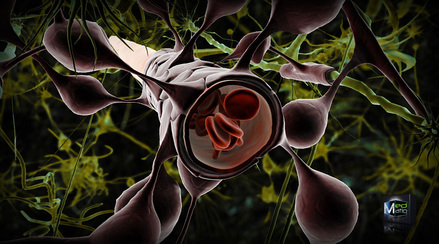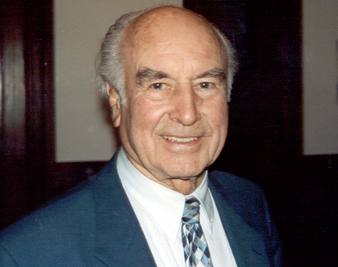The Cannabis Papers: A citizen’s guide to cannabinoids (2011)
By Publius
Here are seven new 2014 findings on how the cannabinoid system (CS) modulates homeostasis and other systems in our bodies: the roundup links to recent PubMed articles on the urinary, neuroendocrine, digestive, central nervous and serotonin systems.
I. Urinary System (Kidney / Diabetes) and CS
“A functionally active endocannabinoid system is present within the kidney. The cannabinoid receptor type 2 (CB2) is expressed by both inflammatory cells and podocytes, and its activation has beneficial effects in experimental diabetic nephropathy. … Thus, CB2 deletion worsens diabetic nephropathy, independent of bone marrow-derived cells.”
Deficiency of cannabinoid receptor of type 2 worsens renal functional and structural abnormalities in streptozotocin-induced diabetic mice.
Barutta F, Grimaldi S, Franco I, Bellini S, Gambino R, Pinach S, Corbelli A, Bruno G, Rastaldi MP, Aveta T, Hirsch E, Di Marzo V, Gruden G.
Kidney Int. 2014 May 14. doi: 10.1038/ki.2014.165. [Epub ahead of print]
PMID: 24827776 [PubMed - as supplied by publisher]
Related citations
II. Neuroendocrine System (Skin) and CS
“Recent evidence has shown that the neuroendocrine regulation of human skin biology also extends to keratins, the major structural components of epithelial cells. For example, thyrotropin-releasing hormone, thyrotropin, opioids, prolactin, and cannabinoid receptor 1-ligands profoundly modulate human keratin gene and protein expression in human epidermis and/or hair follicle epithelium in situ.”
Harnessing neuroendocrine controls of keratin expression: A new therapeutic strategy for skin diseases?
Ramot Y, Paus R.
Bioessays. 2014 May 13. doi: 10.1002/bies.201400006. [Epub ahead of print]
PMID: 24823963 [PubMed - as supplied by publisher]
Related citations
III. Digestive System and CS
“Palmitoylethanolamide (PEA), a naturally-occurring acylethanolamide chemically related to the endocannabinoid anandamide, interacts with targets that have been identified in peripheral nerves controlling gastrointestinal motility, i.e. cannabinoid (CB1 and CB2 ) receptors, transient receptor potential vanilloid type-1 (TRPV1), and peroxisomal proliferator activated receptor α (PPARα).”
Ultramicronized palmitoylethanolamide normalizes intestinal motility in a murine model of post-inflammatory accelerated transit: involvement of CB1 receptors and TRPV1.
Capasso R, Orlando P, Pagano E, Aveta T, Buono L, Borrelli F, Di Marzo V, Izzo AA.
Br J Pharmacol. 2014 May 12. doi: 10.1111/bph.12759. [Epub ahead of print]
PMID: 24818658 [PubMed - as supplied by publisher]
Related citations
IV. Central Nervous System and CS
“G-protein-coupled receptors (GPCRs) constitute an example of proteins that are the key factors in the framework needed to sustain brain and nerve structure and function. The versatility underlying nervous system anatomy takes advantage of a recently discovered feature of GPCRs, the possibility to form heteromers that, placed at specific neuronal subsets and at specific locations (pre-, post-, or peri-synaptic), contribute to attain unique neural functions.”
G-Protein-Coupled Receptor Heteromers as Key Players in the Molecular Architecture of the Central Nervous System.
Brugarolas M, Navarro G, Martínez-Pinilla E, Angelats E, Casadó V, Lanciego JL, Franco R.
CNS Neurosci Ther. 2014 May 9. doi: 10.1111/cns.12277. [Epub ahead of print]
PMID: 24809909 [PubMed - as supplied by publisher]
Related citations
V. Serotonin System and the CS
“Serotonin (5-HT) plays pivotal roles in the pathogenesis of post-infectious irritable bowel syndrome (PI-IBS), and luminal 5-HT time-dependently modulates visceral nociception. We found that duodenal biopsies from PI-IBS patients exhibited increased 5-HT and decreased anandamide levels and that decreased anandamide was associated with abdominal pain severity, indicating a link between 5- HT and endocannabinoid signaling pathways in PI-IBS.”
Vagal anandamide signaling via cannabinoid receptor 1 contributes to luminal 5-HT modulation of visceral nociception in rats.
Feng CC, Yan XJ, Chen X, Wang EM, Liu Q, Zhang LY, Chen J, Fang JY, Chen SL.
Pain. 2014 May 8. pii: S0304-3959(14)00225-5. doi: 10.1016/j.pain.2014.05.005. [Epub ahead of print]
PMID: 24813296 [PubMed - as supplied by publisher]
Related citations
VI. Central Nervous System (Blood-Brain Barrier) and CS
“Early brain injury (EBI), following subarachnoid hemorrhage (SAH), comprises blood-brain barrier (BBB) disruption and consequent edema formation. … We suggest that CB2R stimulation attenuates neurological outcome and brain edema, by suppressing leukocyte infiltration into the brain through TGF-β1 up-regulation and E-selectin reduction, resulting in protection of the BBB after SAH.”
Cannabinoid type 2 receptor stimulation attenuates brain edema by reducing cerebral leukocyte infiltration following subarachnoid hemorrhage in rats.
Fujii M, Sherchan P, Krafft PR, Rolland WB, Soejima Y, Zhang JH.
J Neurol Sci. 2014 Apr 30. pii: S0022-510X(14)00270-6. doi: 10.1016/j.jns.2014.04.034. [Epub ahead of print]
PMID: 24819918 [PubMed - as supplied by publisher]
Related citations
VII. Central Nervous System (Memory) and CS
“The reactivation of a memory can result in its destabilization, necessitating a process of memory reconsolidation to maintain its persistence. Here we show that the destabilization of a contextual fear memory is potentiated by the cannabinoid CB1 receptor agonist Arachidonyl-2-chloroethylamide (ACEA). … These results indicate that memory expression and destabilization, while being independent from one another, are both dependent upon memory reactivation. Moreover, memory destabilization can be enhanced pharmacologically, which may be of therapeutic potential.”
Inhibition and enhancement of contextual fear memory destabilization.
Lee JL, Flavell CR.
Front Behav Neurosci. 2014 Apr 28;8:144. doi: 10.3389/fnbeh.2014.00144. eCollection 2014.
PMID: 24808841 [PubMed] Free PMC Article
Related citations
Bonus Video:
Posted by Bryan W. Brickner




 RSS Feed
RSS Feed
